1. Remove dirt: Before waterproofing, the shoe should be thoroughly cleaned of dust and loose dirt.
A crepe or horsehair brush can be used to gently clean the surface without damaging the delicate suede leather.
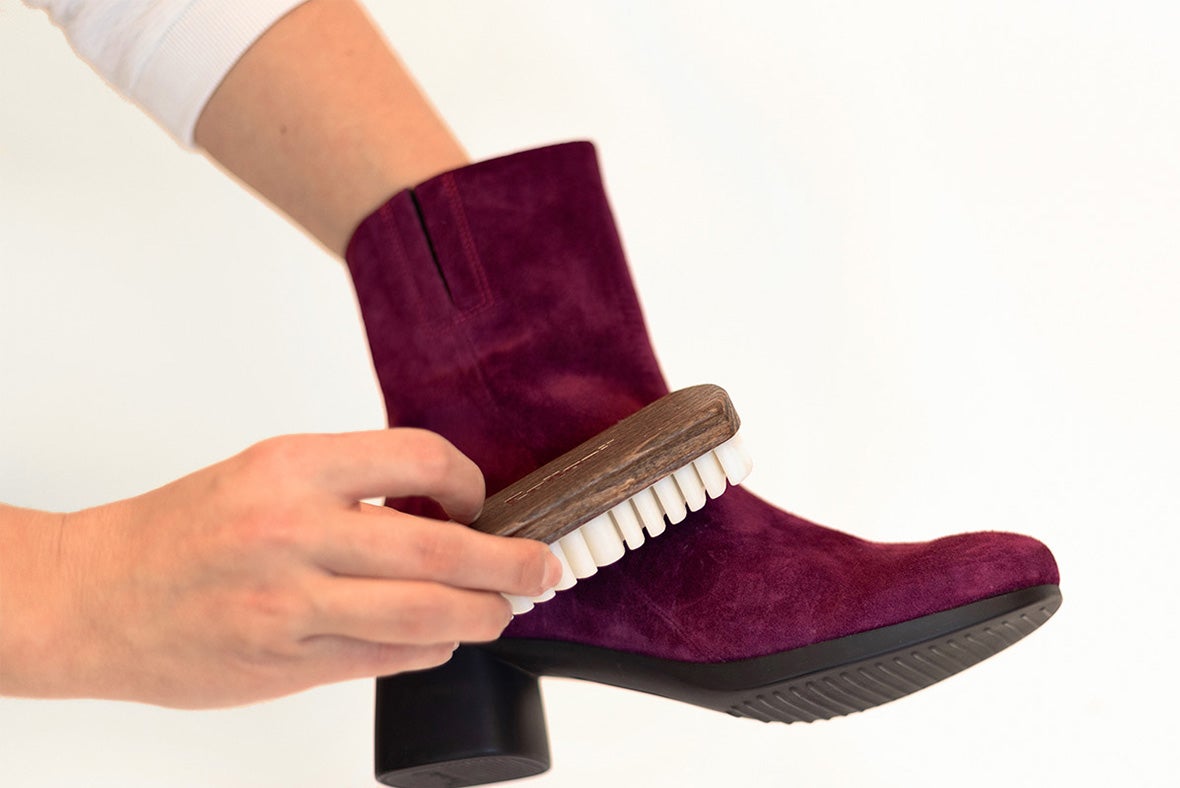
The following overview shows which types of leather are particularly sensitive, how to choose the right waterproofing agent and what to look out for when using it.
Leather is a natural, breathable material – but it is also sensitive to moisture, dirt and salt residues. Open-pored leathers such as suede, nubuck and wild leather require special protection. However, smooth leather also benefits from regular waterproofing.
Accordingly, waterproofing is an important part of leather shoe care.
Waterproofing forms an invisible protective film over the leather – without closing the pores. This allows the material to remain breathable, but significantly more resistant to external influences.
Waterproofing agents can slightly change the colour or create a shine. Test on an inconspicuous area first – especially with sensitive types of leather such as suede or effect leather. It is therefore advisable to test the waterproofing agent on a small, inconspicuous area (e.g. on the inside of the heel) of the shoe first to ensure that it has no undesirable effects on the leather.
To keep your leather shoes clean and optimally protected, it is crucial to follow the correct sequence of care steps when waterproofing them. The application differs depending on the type of leather – smooth leather or suede. Below are instructions that address the specific characteristics of both materials.
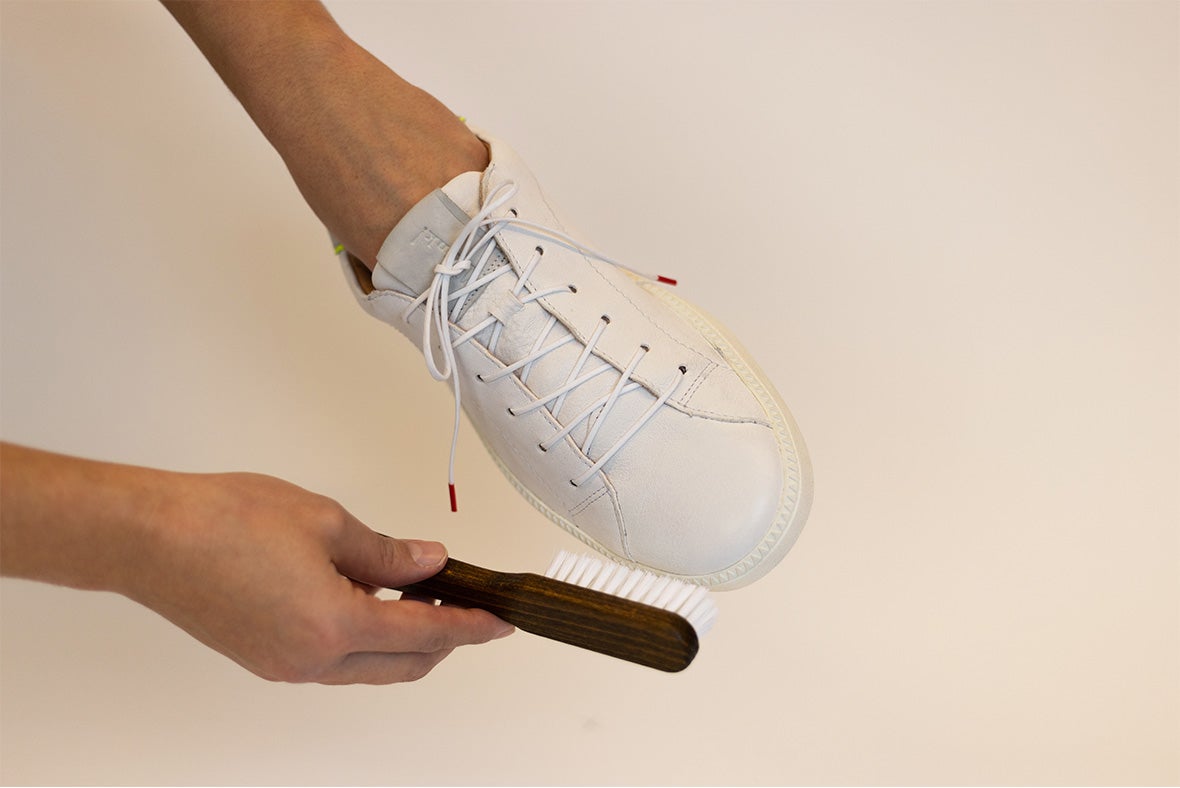
1. Remove any dirt: Carefully remove surface dirt with a scrubbing brush or a slightly damp cloth. This allows the impregnating agent to be absorbed evenly and take full effect.
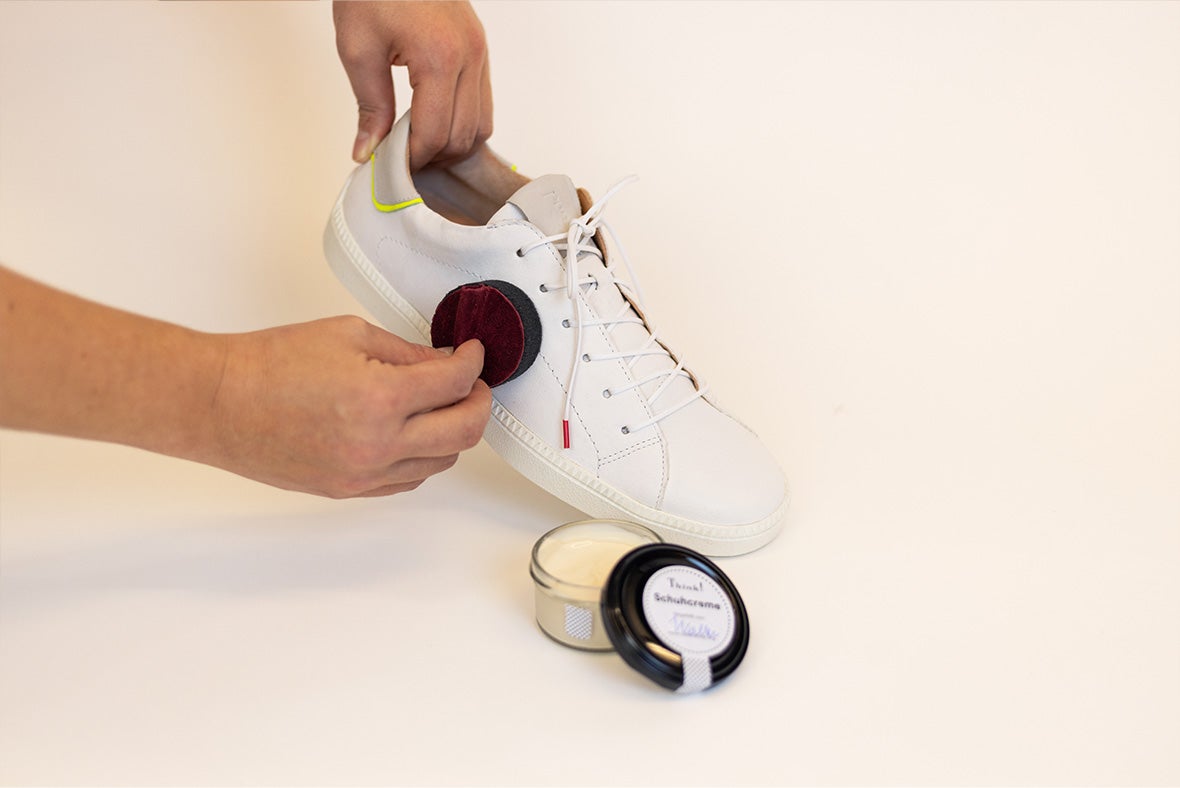
2. Apply shoe cream: Apply shoe cream (transparent or in the leather's colour) using even, circular motions. Be thorough, and don't leave any of the colour visible.
3. Working in: Afterwards, go over the material again with a cotton cloth or a horsehair brush (extremely soft brush). Leave the shoes to dry for a few minutes.
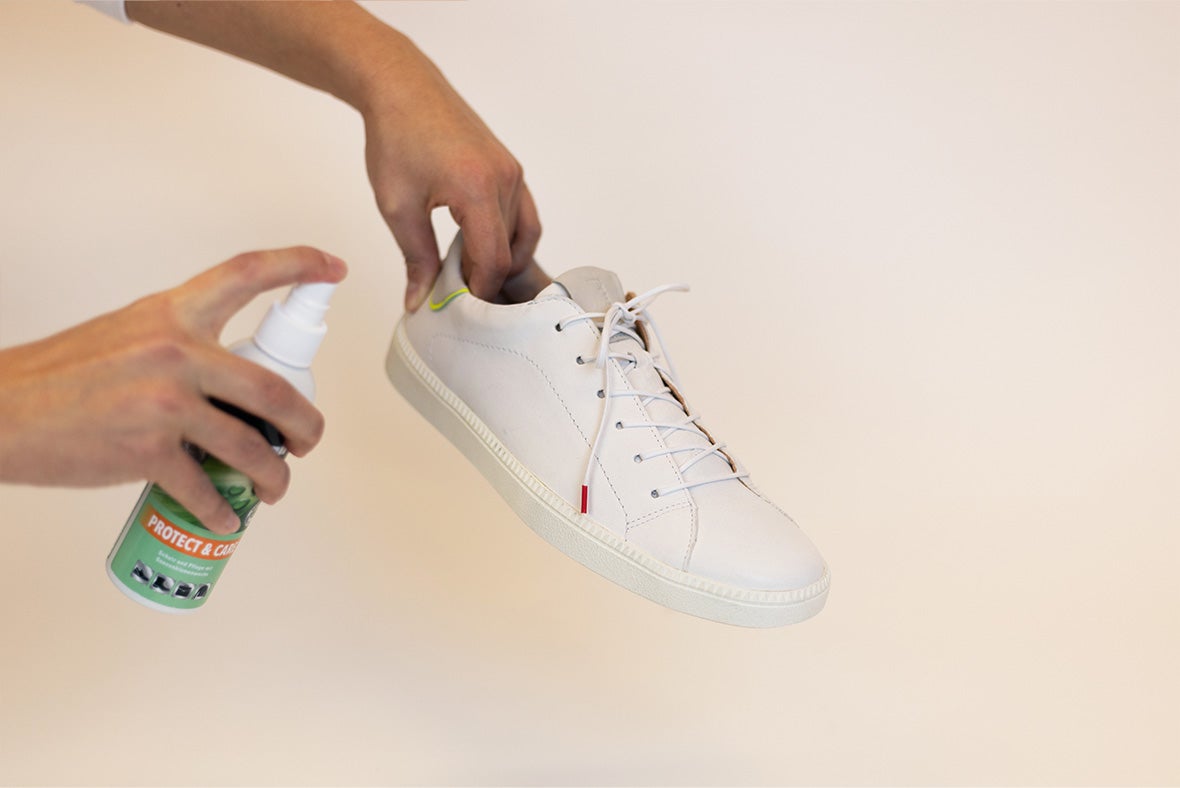
4. Waterproof: The shoe is now treated with a suitable waterproofing agent – tailored to the respective material.
5. Leave to dry: Then leave to dry at room temperature – at least overnight, ideally for up to 24 hours. Newspaper inside the shoes helps to absorb moisture and maintain their shape.
Tip: As many sprays contain aerosols, it is best to apply them outdoors. Alternatively, you can use a a CFC-free pump spray.
Rain, sludge snow: in the autumn and winter, leather shoes are especially often exposed to moisture and dirt. Protecting them with a waterproofer is particularly important now.
1. Remove dirt: Before waterproofing, the shoe should be thoroughly cleaned of dust and loose dirt.
A crepe or horsehair brush can be used to gently clean the surface without damaging the delicate suede leather.

2. Roughen the leather: Roughening the leather with a special suede/rough leather brush not only removes deeply ingrained dirt from the material but also re-fluffs the pile, thereby restoring its typical velvety texture.
Important: Unlike smooth leather, you do not apply cream to suede or brushed leather!
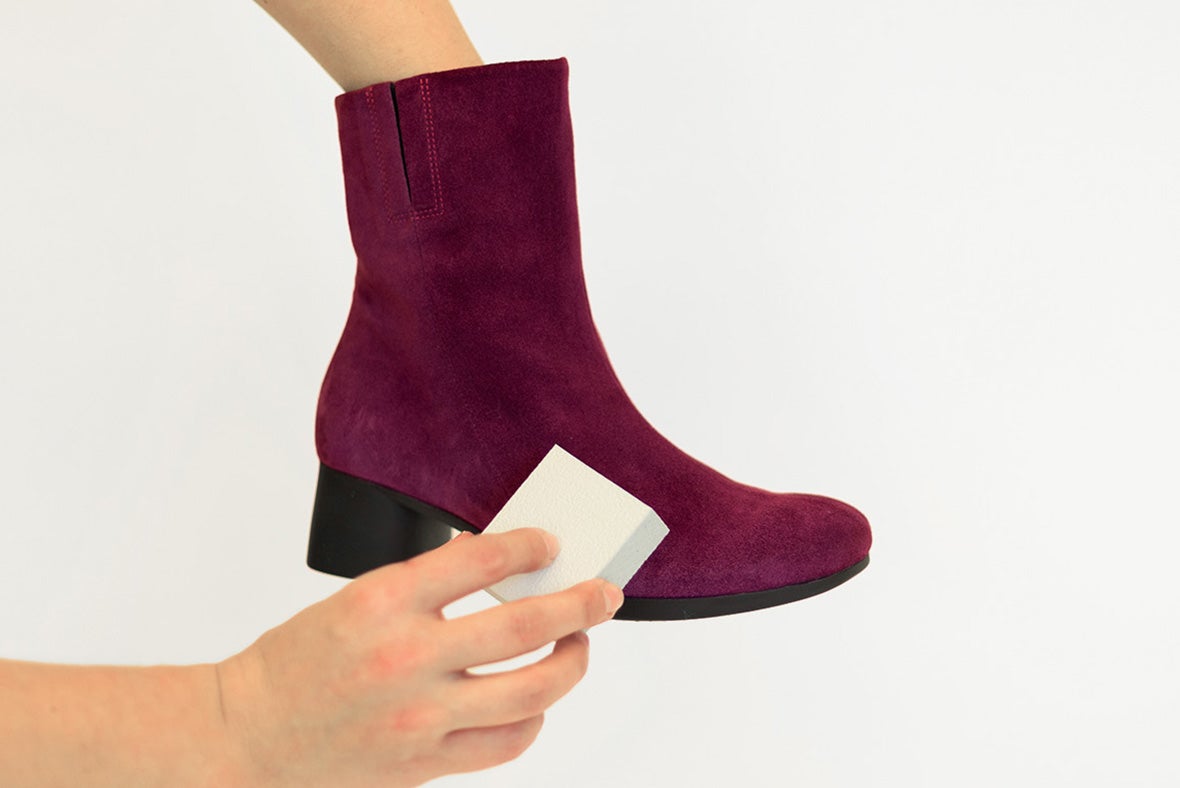
3. Test waterproofer: Apply the waterproofer to a small, non-exposed area of the shoe (e.g. on the inside of the heel) to see whether and how the waterproofer changes the look and feel of the leather. Only continue if you are satisfied with the result.
4. Waterproof: Now apply the waterproofer, covering the entire shoe in a thin layer, in the same way it is applied to smooth leather (see above).
5. Leave to dry: Leave the shoes to dry according to the manufacturer's recommendations – preferably with newspaper stuffed inside them – for up to 24 hours, or at least overnight.
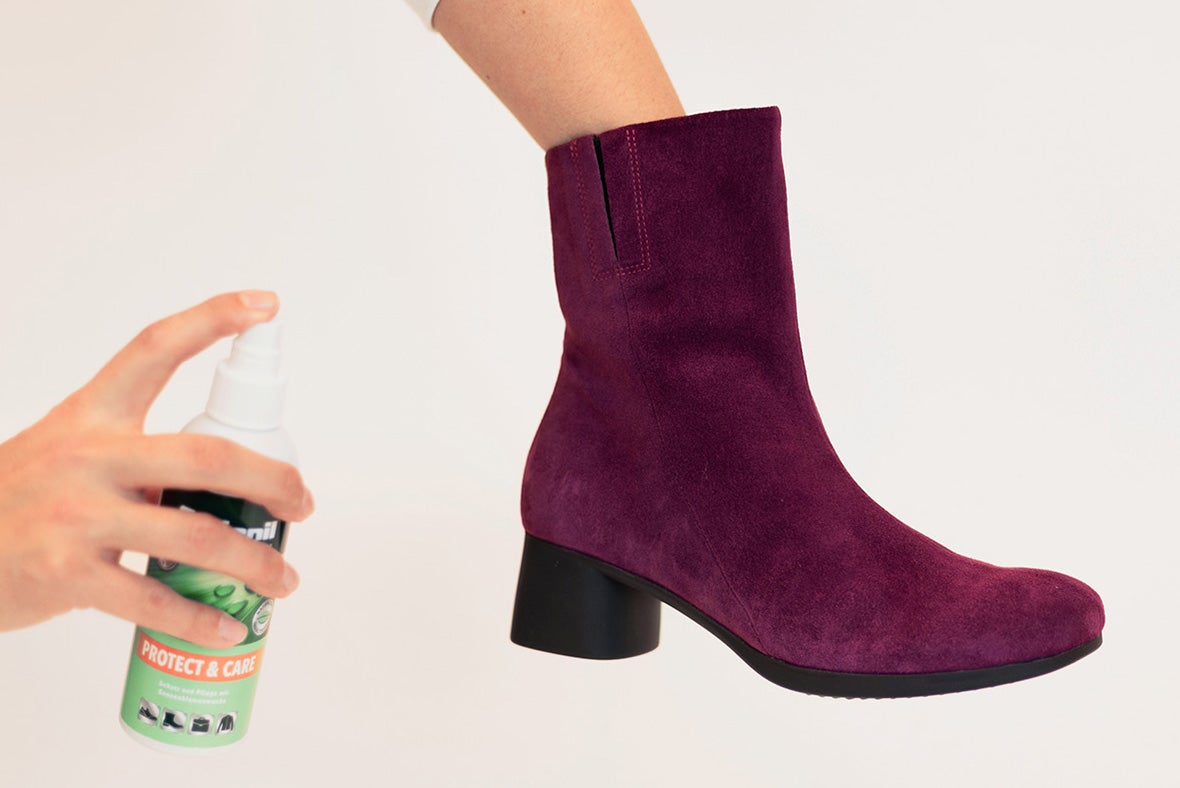
How often waterproofing is necessary depends on how often the shoes are worn and the weather conditions. Especially in wet autumn weather or in winter, it may be advisable to waterproof them two to three times a week.
Movement and frequent wear cause the protective waterproofing layer to wear off over time, especially in areas subject to heavy wear such as the crease zone. After each intensive use, especially in rain or snow, it is advisable to allow the shoes to dry completely and then waterproof them again.
As a general rule, it is advisable to waterproof all leather shoes. However, caution is advised with effect leathers: only solvent-free or water-soluble waterproofing agents should be used here. With suede leather, it is advisable to test the product on an inconspicuous area beforehand to rule out any possible changes to the material.
Think! supplies models made from vegetable-tanned leather, suede or velvet leather that are already pre-waterproofed. Nevertheless, we recommend re-waterproofing them during the first few weeks – especially in damp or winter weather.
Yes, absolutely. You can find detailed instructions in the section "Waterproofing smooth leather shoes".
No. However, what is important is to stuff the insides with a material that absorbs moisture (e.g. newspaper), and to leave them to dry out completely. Do not put the shoes on top of a radiator to dry them (as this could make the leather brittle or change its shape), but in a dry place at room temperature.
You should waterproof new leather shoes before you wear them for the first time (you can find detailed instructions in this section ) to protect them from moisture and dirt. As a shoe care measure, you can treat smooth leather shoes with a shoe cream first.
Never use shoe cream on suede or brushed leather. Apply shoe cream to smooth leather first before covering it with a water-repellent layer of waterproofer.
We advise against alternatives such as hairspray or household remedies. We recommend only commercially available waterproofing products – either sprays or foams. Hairspray clogs the pores and can make the leather brittle. Fats and oils also prevent the material from breathing and impair its natural properties.
That's not necessary – on the contrary, less is indeed more when it comes to waterproofing shoes. It is a much better idea to frequently apply a thin layer of waterproofer to your shoes.
In many cases, yes – if the waterproofing agent is expressly labelled for use on multiple types of leather. Smooth leather can generally tolerate more robust agents. Suede and nubuck require a gentler spray that does not seal the surface and preserves its velvety texture. It is worth checking the label before purchasing and, if in doubt, carrying out a small test on an inconspicuous area.
Sustainable products, such as the Organic line from Collonil, are ideal for environmentally friendly care. For effect leathers, solvent-free or water-soluble waterproofing agents should be used to avoid damaging the delicate finish.